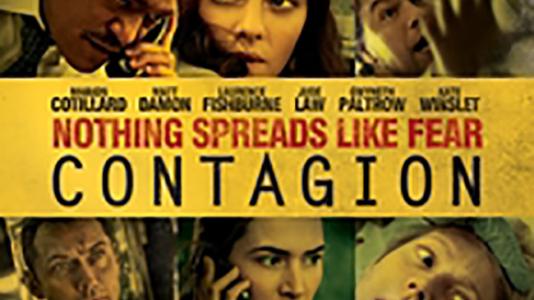
Science Behind the Fiction critiques the science portrayed in popular films and literature. Today Argonne emergency planning experts review “Contagion,” the 2011 hit movie directed by Steven Soderbergh, which follows the spread of a killer virus in modern-day society.
Sure, a killer virus set on destroying humanity makes a good pitch for a movie. But whether the audience is on the edge of their seats or rolling in the aisles depends entirely on how the movie balances fact and science fiction. 2011’s Contagion, however, proved that a thriller can be creative without compromising scientific integrity.
At Argonne National Laboratory, emergency preparedness analysts like Dan Walsh work with public health departments to make sure they could quickly respond to a Contagion-like outbreak. We asked Walsh what he thought of the portrayals in the movie.
“It’s true there is a constant vulnerability. We are so susceptible to an attack from a pandemic virus, and a novel virus could easily wipe out millions of people,” said Walsh, who recently helped the Chicago Department of Public Health plan its emergency response to an outbreak of the pandemic H1N1 influenza virus.
“With H1N1, people may have gotten a false sense of security because it was so mild. Some thought the CDC overreacted, but you never know what a virus like this can do. If a new virus attacks, we have no immunity.”
Ed Tanzman, who leads the emergency preparedness team at Argonne, thought the film exaggerated a few things, such as how quickly they replicated the vaccine. But, he says, “Contagion was a pretty accurate depiction of how public health officials would react in real life if a pandemic virus hit their cities.”
He says the film also did justice to the hunt for Patient Zero and the process of looking for the cure, without hyping it up into a modern-day witch hunt.
According to Walsh, “if you can figure out the source, you can figure out where the virus came from. This is something practiced in everyday epidemiology—they always want the source.”
Before they can make a vaccine, researchers need to figure out how the virus itself works. First, they need to grow the virus and observe how it kills its host cells; then they can move on to finding out how to stop it. The actors in Contagion portrayed the part of researchers without artifice, Walsh thought, and used the correct language of epidemiology without falling back on the tired stereotypes of science and scientists.
Contagion also demonstrated how a deadly virus can overcome the best containment efforts. Dr. Erin Mears (Kate Winslet) is infected by “fomites,” or inanimate objects (like clothing or hair) that can host infectious organisms long enough for them to transfer from one person to another. This may have made you leave the theater with the urge to sterilize everything—but it also highlighted how challenging virus containment can be, particularly if it’s an unknown type. (Perhaps it also made you want to wash your hands; if so, all the better—the CDC touts this as a top method of preventing transmission of both viruses and bacteria.)
Tanzman was also struck by how poignantly the movie captured the nature of humanity in the face of such a horrific doomsday scenario. In the movie, Mitch Emhoff’s (Matt Damon) teenage daughter struggles to keep a relationship with her boyfriend, even though they are forbidden from seeing each other while the virus runs its course. Her frustration with having her life put on hold, Tanzman said, reflected how most people would react in that situation.
During a prolonged pandemic, it’s likely that many aspects of society would break down, especially as resources dwindled and basic necessities disappeared. But with the help of experts like Argonne’s Dan Walsh and Ed Tanzman, cities like Chicago can run emergency drills to prepare for the worst-case scenarios.
“What I took away from that movie, apart from its excellent attention to detail,” Tanzman said, “was that it did an outstanding job of showing the heroism of people in government and public health. If put in a situation like this in real life, I believe many of them would do the same things.”
This story was originally published in volume 6, issue 1 of Argonne Now, the laboratory’s biannual science magazine.

